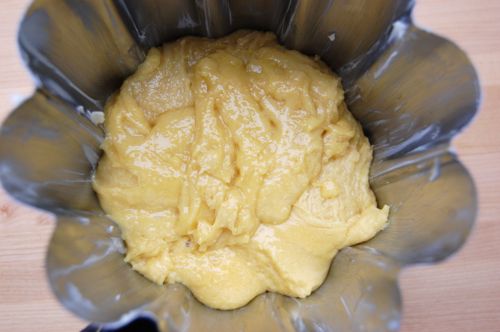Harumph.

Four attempts so far and the best I can produce is sweet library paste. I cut the sugar down by a third, by half, by two thirds…but still the dough won’t rise one iota. Frustrating as this is, it’s an object lesson in the lethality of sugar, at least where microbial life is concerned.
We’re accustomed to thinking of sugar as food for microbes, but in truth they can only take it in very small doses. I remember getting into a debate with the wife of a friend over this subject. “If sugar is so deadly to microbes,” she argued, “then why do I see mold growing on old jam?”
“You haven’t seen mold growing in jam,” I countered, “you’ve seen it growing on jam.” Which is to say, in the little pools of condensation on the surface of the jam where the sugar concentration is well below what it is underneath.
I was pretty smug that evening. Not so much today. However I’m still impressed that just a couple of ounces of sugar can kill off pretty much every living thing in a dough that weighs over a pound. It’s an impressive display. Sigh.
Hi Joe.
I looked up (and translated) several of the recipes online and found they have beaten egg whites folded in at the end. Then the dough sits for a an hour in the pan before baking. Some even started with a “normal” flour, yeast, liquid mix using the brandy to feed the yeast. Then after the first rise, the butter, egg yokes and sugar are added and the egg whites are folded in at the end. Hope this helps!
Thanks for your research, Eva! I’ll see what I can do to save this project today. I think I’ll get the problem solved thanks to lots of great help like yours!
– Joe
Try the recipe in this link:
http://cuisine.journaldesfemmes.com/recette/345144-le-gateau-battu. But it’s in French. I can translate for you though. Let me know.
Pour 8 personnes :
250 g de farine
1/2 cube de levure boulangère fraîche (ou 1cuillère à café de levure SAF)
7 oeufs
150 g de sucre
5 g de sel
8 cl de lait tiède
1 cuillère à café de vanille en poudre
quelques gouttes d’arôme amande douce
150 g de beurre mou
1Sortir les ingrédients frais au moins 30 min à l’avance afin qu’ils soient à température ambiante.
Diluer la levure fraîche dans le lait tiède (si levure sèche, la mélanger directement à la farine).
Verser la farine dans le bol du robot, creuser un puits et mettre la levure diluée. Recouvrir d’un peu de farine et mélanger rapidement afin de former une grossière boule de pâte. La recouvrir du reste de farine, filmer le bol et laisser reposer 2h à température ambiante jusqu’à ce qu’elle double de volume.
2Ajouter alors les jaunes d’œufs, le sucre, le sel, la vanille et l’amande douce. Bien pétrir afin d’amalgamer le tout puis ajouter les dés de beurre mou petit à petit. Vous devez obtenir une pâte liquide et bien lisse.
Monter les blancs en neige fermes avec une pincée de sel et les incorporer délicatement à la préparation à l’aide d’une Maryse ou spatule.
3Verser dans un moule à bords hauts beurré (la pâte doit couvrir un peu plus de la moitié du moule), couvrir et laisser lever (elle doit arriver à 1 cm du bord).
4Préchauffer le four à 160°C et enfourner 45-50 min. La lame devra ressortir propre et sèche. En cours de cuisson, couvrir au besoin d’une feuille d’aluminium si le dessus dore trop vite.
Thank you, Regine!
How about starting with a sponge?
Osmotolerant yeast, anyone?
*grin*
cheers, hope it comes together for you soon!
Chris
I have a feeling I’ll get this done today. Thanks Chris!
– Joe
Sounds like you need some osmotolerant yeast!
SAF Gold Label is my go-to.
http://www.kingarthurflour.com/shop/items/saf-gold-instant-yeast-16-oz
Cheers, Bri!
– Joe
the King Arthur Flour guys promote (and of course sell) vital wheat gluten to help dough rise, including sweet doughs that are prone to being finicky — have you ever used this product?
Yes indeed I have. It’s very good for an application like this, in fact. However it’s not something most people can get easily, so I’m hoping I can succeed at this without it. Thanks for the good thinking though!